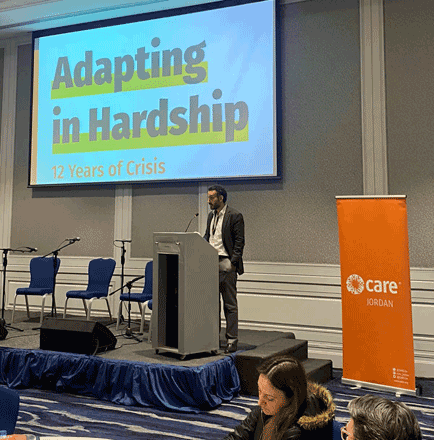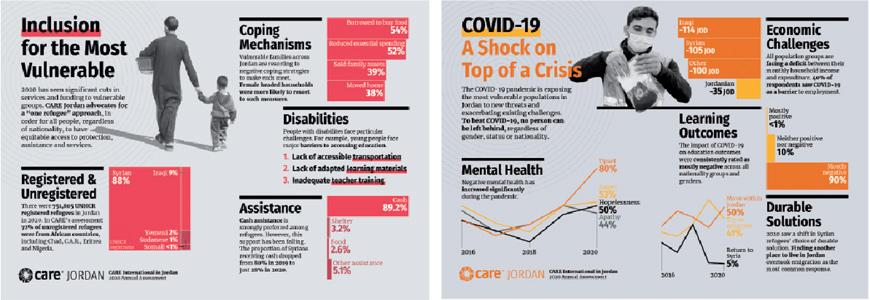You are here
Urban Syrian refugees struggling with high living costs, debts — study
By Khetam Malkawi - Apr 16,2014 - Last updated at Apr 16,2014
AMMAN — Half-a-million Syrian refugees living in urban areas in Jordan are struggling more than ever to cope with inadequate housing, high debts, rising living costs and educational challenges for their children, according to a recent study.
A CARE International household assessment that included more than 2,200 Syrian refugees showed that 90 per cent of the refugees are indebted to relatives, landlords, shopkeepers and neighbours, with rents having increased by almost a third in the past year.
The study, a copy of which was sent to The Jordan Times on Wednesday, said the world’s attention is focused on the enormous refugee camp at Zaatari, but more than 80 per cent of Syrian refugees live in cities, towns and villages.
“Unable to work legally in the countries where they have sought asylum, they survive off their savings, gifts from family or neighbours, and, worryingly, black-market jobs,” the study said.
According to the international organisation, 36 per cent of the families registered with CARE are headed by women.
“They have fled without their husbands, who are either still in Syria, injured or have been killed. They have to take care of their young children and older relatives, but have difficulties [in earning] money,” the study said.
These women, it added, worry about how they can cover their monthly expenses and deal with medical emergencies.
CARE’s study also showed that only 52 per cent of Syrian refugee boys are currently attending school (compared with 62 per cent of girls). This is an improvement of CARE’s findings in last year’s urban assessment, where 40 per cent of children were enrolled at school.
“Three years after the Syria crisis started refugee families are becoming more and more destitute. The longer they live in neighbouring countries, the more financially vulnerable they become,” said Salam Kanaan, CARE Jordan’s country director, in a statement sent to The Jordan Times.
“Families have fled months or years ago, they do not have any savings anymore,” he added.
The study also showed that the influx of Syrian refugees increasingly impacts Jordanian host communities, who are battling with the same challenges — increased accommodation and living costs, and access to outstretched public services.
Twenty per cent of the most vulnerable Jordanian families interviewed, said they struggle to meet their food needs.
“A lot of support has been provided by the international community as well as the host communities. However, with no end to this crisis in sight, Syrian refugees and vulnerable host communities continue to need our support, otherwise millions of people are pushed further into poverty and destitution,” Kanaan noted.
Since the crisis started, CARE has provided nearly 300,000 Syrians and vulnerable host communities in Jordan and Lebanon with humanitarian assistance.
The organisation says its primary work is providing cash assistance to the poorest.
“It is one of the simplest and most efficient ways to help urban refugees meet their urgent needs, and it supports both the displaced and the economies of the communities that have taken them in. And yet the organisations providing support for Syrian refugees find themselves drastically under-funded.”
The main aim of CARE’s study is to enhance understanding of the needs and capacities of urban Syrian refugees, in particular women and girls, and vulnerable host communities in Jordan.
It uses two baseline assessments, “Baseline Assessment of Community Identified Vulnerabilities among Syrian Refugees living in Amman” (2012), and “Syrian Refugees in Urban Jordan: A Baseline Assessment of Community-Identified Vulnerabilities among Syrian Refugees Living in Irbid, Madaba, Mafraq, and Zarqa” (2013), to identify trends.
Related Articles
AMMAN — Jordan’s most vulnerable communities are faced by “great economic pressure” in the post-pandemic period, which has “exasperated exis
AMMAN — The COVID-19 pandemic has had a profound impact on Jordan’s most vulnerable population during 2020 and has exposed them to new chall
AMMAN — The NGO Care International on Thursday announced the launching of a new $3-million project aimed at “improving the protection and re


















